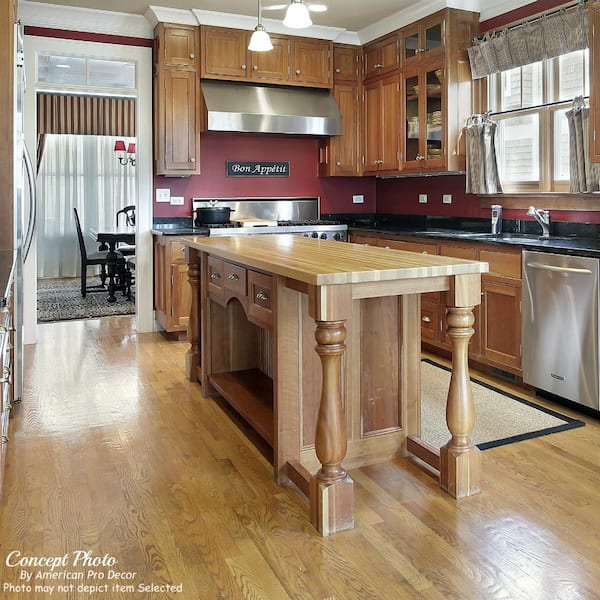Update Your Kitchen's Aesthetic with Costs Legs For Kitchen Island
Update Your Kitchen's Aesthetic with Costs Legs For Kitchen Island
Blog Article
Necessary Elements to Think About When Choosing Legs For Kitchen Area Island
Selecting the suitable legs for a kitchen area island involves a mindful evaluation of numerous variables that can considerably influence both capability and visual appeal. As we discover these elements, it becomes clear that each choice can have far-reaching implications for the total kitchen area experience.
Material Options
When choosing legs for a kitchen area island, comprehending the numerous material choices is essential for accomplishing both aesthetic appeal and structural integrity (Legs For Kitchen Island). The choice of material considerably affects not only the durability of the island yet additionally its general style and capability
Metal legs, usually made from stainless steel or wrought iron, add a industrial and modern-day feeling while ensuring durability and security. These products are resistant to use and can sustain significant weight, making them suitable for bigger islands.
Another alternative is crafted materials, like MDF or plywood, which can be extra cost-efficient while still supplying an array of coatings. They may not offer the exact same level of security as strong wood or metal. Legs For Kitchen Island. Last but not least, products such as acrylic or glass can produce a contemporary look, though they might need extra support to make certain security.
Inevitably, the choice of material for kitchen area island legs must straighten with the preferred functionality and the total style of the kitchen.
Style and Design

When thinking about design, the shape and coating of the legs are essential. Conical legs can provide a sense of lightness and elegance, while thicker, more robust legs can convey toughness and stability. Additionally, the finish-- be it painted, stained, or natural-- should complement the kitchen cabinetry and kitchen counter products to create a unified appearance.
Additionally, the style of the legs can also mirror individual taste. Personalized or ornamental legs, such as those including complex carvings or distinct geometric shapes, can act as prime focus, including character and individuality to the kitchen area. Ultimately, the ideal option will certainly not just improve performance yet also raise the visual allure, making the kitchen area island a standout function of the home.
Height Factors To Consider
Selecting the suitable elevation for kitchen area island legs is critical, as it directly influences both functionality and convenience. The typical elevation for a kitchen area island usually varies from 36 to 42 inches, aligning with typical countertop heights.

It is also important to make up users' heights and preferences. Personalizing the elevation can make sure a comfortable experience for all member of the family, making the kitchen island an extra practical and pleasurable room.
Weight Assistance
Ensuring adequate weight support for kitchen area island legs is essential for both safety and security and performance. The cooking area island typically serves several objectives, consisting of food prep work, eating, and additional storage space, requiring a durable support framework. When choosing legs, it is important to consider the overall weight ability required based upon the island's intended usage and the products that will be positioned on it.
The choice of product for the legs plays a significant function in their weight-bearing capacities. Solid timber, steel, and durable compounds generally supply superior stamina contrasted to lighter products. Additionally, the style of the legs-- whether they are right, tapered, or have a pedestal form-- can influence their capacity to distribute weight efficiently throughout the framework.
Always consult the producer's specifications concerning tons limitations to guarantee that the legs can sustain the intended view it now weight without compromising safety. In summary, picking cooking area island legs with ample weight assistance is vital for producing a risk-free and practical cooking room.
Setup and Maintenance
Proper setup and maintenance of kitchen island legs are critical for ensuring durability and security. This often entails protecting the legs to the island base using ideal fasteners, ensuring that the legs are level and aligned.
As soon as installed, normal upkeep is needed to preserve the stability and appearance of the legs - Legs For Kitchen Island. For wooden legs, routine cleaning with a moist fabric and application of ideal wood polish can protect against moisture damages and maintain their finish. Metal legs might call for a mild cleansing option to remove grease and gunk, adhered to by a completely dry towel to protect against rust development
Additionally, inspect the legs routinely for indications of wear or damage, such as cracks or loose joints. Tightening up screws or screws as required can likewise prolong the life expectancy of the legs. By adhering to these installment and maintenance techniques, property owners can make certain that their cooking area island continues to be durable and aesthetically appealing for years to find.
Verdict

Visual coherence is paramount in picking the design and style of legs for a kitchen island, as these elements greatly affect the total atmosphere of the area. Conical legs can provide a sense of agility and style, while thicker, much more robust legs can share strength and security.Choosing the ideal height for kitchen island legs is vital, as it directly influences Click Here both capability and comfort. In summary, picking cooking area island legs with ample weight assistance is necessary for producing a secure and useful why not find out more culinary space.
In conclusion, choosing legs for a kitchen island necessitates mindful consideration of various variables, consisting of material choices, design, elevation, weight assistance, and installment.
Report this page